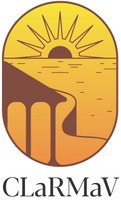CLaRMaV is a Marie Skłodowska-Curie Actions (MSCA) project at the University of Bologna (Host Institution) and the University of Pennsylvania (Associated Partner).

B A C K G R O U N D
Coastal heritage is facing increasing threats from both natural elements and human activities, making it essential to document it before it disappears. Maritime villas play a crucial role in our understanding of ancient urbanisation and the dynamic relationship between humans and the environment. Given the serious threats posed by coastal erosion, climate change, and human activity, systematic documentation and analysis of these ancient structures are crucial. Currently, a gap exists in research regarding architectural regional comparisons of maritime villas and their influence on local environments. CLaRMaV focuses on the study of Roman maritime villas in the Mediterranean Basin between the 2nd century BC and the 6th century AD. It investigates architectural models, trends, spatial functions, and the villas’ contributions to the local economy.
CLaRMaV's ultimate mission is to safeguard these irreplaceable assets for future generations.

O B J E C T I V E S
CLaRMaV investigates the typology of Roman maritime villas in the Mediterranean regions and their interaction with local environments. It has three main objectives:
This is the first attempt at an accurate large-scale study aiming to identify Mediterranean-wide trends, enhancing our understanding of cultural developments and traditions. It will help bridge ancient and modern cultural heritages and provide valuable data for local authorities involved in preserving coastal heritage and urban planning.

M E T H O D O L O G Y
CLaRMaV aims to provide an overall overview based on qualitative data (i.e. villas with secure identification and sufficient documentation) derived from documentary, literary, and archaeological evidences. The project adopts an architectural, environmental, and socio-economic perspective, utilising a multidisciplinary methodology that integrates archaeological and documentary interpretation with GIS, 3D technologies, and hydraulic engineering. Short site visits capture specific architectural water features (like fountains and fishponds) and obtain precise measurements, such as water pipe diameters, not available in existing documentation. Skills in environmental studies and water flow calculations are acquired through a secondment at the E-GEA - Centro Interuniversitario per gli studi del Territorio at the University of Bologna, alongside courses in hydraulic engineering at the Department of Civil, Chemical, Environmental, and Materials Engineering.

F U N D I N G
CLaRMaV is an EU-financed R&I project funded under the HORIZON TMA Marie Skłodowska-Curie Actions (MSCA) Postdoctoral Fellowships - Global Fellowships 2022 (Grant Agreement ID: 101106554) and hosted at Alma Mater Studiorum - Università di Bologna (Host Institution) and the University of Pennsylvania (Associated Partner).

DISCLAIMER: Project No. 101106554 funded by the European Union. Views and opinions expressed are however those of the author only and do not necessarily reflect those of the European Union or the European Research Executive Agency (REA). Neither the European Union nor the granting authority can be held responsible for them.